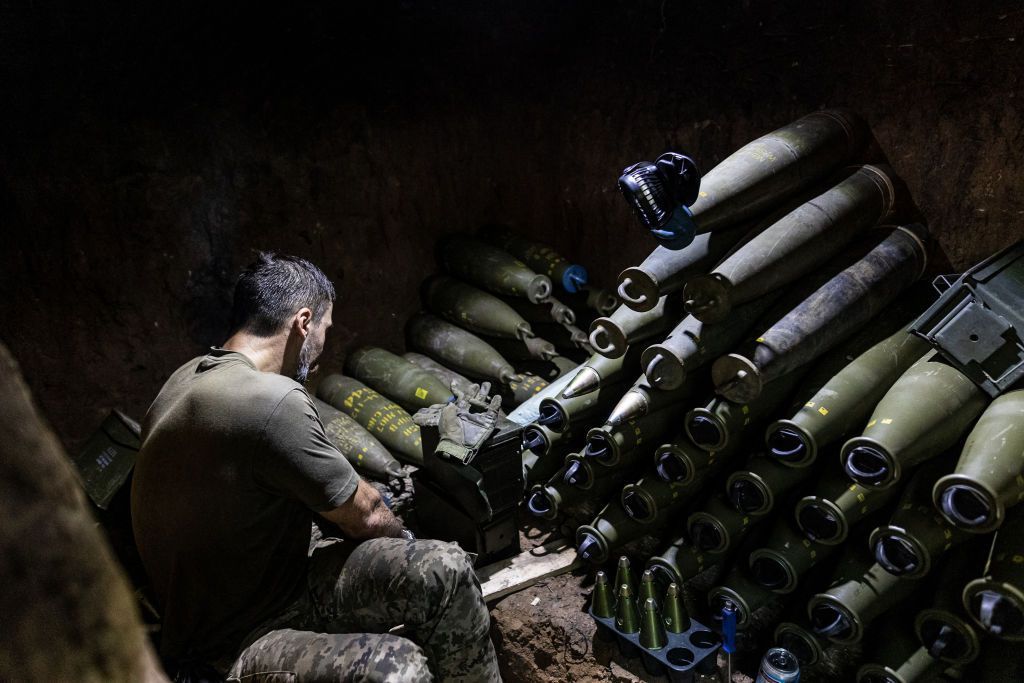Don't Toews Me
Footballguy

Hundreds of Ukrainian Troops Feared Captured or Missing in Chaotic Retreat
The fall of Avdiivka to Russia may be more significant than it initially seemed as Ukraine struggles with morale and recruitment.
Hundreds of Ukrainian troops may have been captured by advancing Russian units or disappeared during Ukraine’s chaotic retreat from the eastern city of Avdiivka, according to senior Western officials and soldiers fighting for Ukraine, a devastating loss that could deal a blow to already weakening morale.
The Russian capture of Avdiivka has emerged as a significant symbolic loss for Ukrainian troops, a sign of the battlefield impact of the failure of the U.S. Congress, so far, to approve more military assistance as dwindling supplies of artillery shells make it even harder to hold the line.
Estimates of how many Ukrainians were captured or missing vary, and a precise count may not be possible until Ukraine solidifies new defensive lines outside the city. But two soldiers with knowledge of Ukraine’s retreat estimated that 850 to 1,000 soldiers appear to have been captured or are unaccounted for. The Western officials said that range seemed accurate.
American officials say the loss of Avdiivka is not a significant strategic setback, arguing that Russian gains in eastern Ukraine will not necessarily lead to any collapse of Ukrainian lines and that Moscow is unlikely to be able to follow up with another major offensive.
But the capture of hundreds of soldiers could change that calculus. American officials have said in recent days that morale was already eroding among Ukrainian troops, in the wake of a failed counteroffensive last year and the removal of a top commander. Because of those problems, the officials said, Ukraine’s military has struggled with recruitment.
Dmytro Lykhovii, a spokesman for General Tarnavsky, disputed reports that hundreds of soldiers were captured, calling it misinformation. But he acknowledged that Russia had captured some service members and that a “certain number” of soldiers were missing.
But some soldiers and Western officials said a failure to execute an orderly withdrawal, and the chaos that unfolded Friday and Saturday as the defenses collapsed, was directly responsible for what appears to be a significant number of soldiers captured.
They said the Ukrainian withdrawal was ill-planned and began too late. The soldiers and Western officials spoke on the condition of anonymity to discuss sensitive intelligence assessments that are at odds with Ukrainian government statements.
Retreating under withering artillery fire, drones and airstrikes is one of the most difficult military maneuvers, challenging commanders to minimize loss of life and allow units to fall back without ceding more land than intended.
Based on interviews with soldiers, Ukraine’s forces were unprepared for how quickly the Russian advance in Avdiivka gathered speed last week.
In Avdiivka, Ukraine appeared to have waited too long to start withdrawing and the frantic retreat quickly turned costly.
For the Ukrainians, the challenge of pulling out of Avdiivka was compounded by the fact Russia had surrounded the city on nearly three sides. A single paved road was the most viable way into and out of the city. That route, which Ukrainian troops nicknamed the road of life, came under direct threat earlier this month, making the withdrawal far more dangerous.
When Ukrainian forces began pulling back, unverified open source videos and photos showed units retreating under artillery fire and bodies scattered along roads and in tree lines. Ukrainian military units have long struggled to communicate with each other because they often have different radio equipment. Soldiers with knowledge of the retreat said the communication problems were a factor in the withdrawal, leading to soldiers being captured, killed and wounded.
The soldiers interviewed by The New York Times suggested that some units pulled back before others were aware of the retreat. That put the units left behind at risk of encirclement by the Russians.
The Kremlin itself does not appear to have been prepared for the speed of the Ukrainian collapse in Avdiivka. Often Kremlin propaganda pushed through the state-controlled news media leads the themes on Russian social media, said Jonathan Teubner, the chief executive of FilterLabs AI, which studies Russian messaging and public opinion. But as the Ukrainian defense in Avdiivka collapsed, the discussions on Russian social media started shifting before the Kremlin settled on new messaging.
“Russia wasn’t really prepped for this either in terms of a prepared propaganda blitz,” Mr. Teubner said. “They have now pounced on it, but haven’t managed to launch a successful coordinated messaging campaign yet.”
Report: North Korean missile fired by Russia against Ukraine contained US and European components
A North Korean ballistic missile fired last month by the Russian military in Ukraine contained hundreds of components that trace back to companies in the US and Europe, according to a new report.
The findings mark the first public identification of North Korea’s reliance on foreign technology for its missile program and underscore the persistent problem facing the Biden administration as it tries to keep cheap, Western-made microelectronics intended for civilian use from winding up in weapons used by North Korea, Iran and Russia.
The UK-based investigative organization Conflict Armament Research, or CAR, directly examined 290 components from remnants of a North Korean ballistic missile recovered in January from Kharkiv, Ukraine, and found that 75% of the components were designed and sold by companies incorporated in the United States, according to the report shared first with CNN.
A further 16% of the components found in the missile were linked to companies incorporated in Europe, the researchers found, and 9% to companies incorporated in Asia. These components primarily comprised the missile’s navigation system and could be traced to 26 companies headquartered in the US, China, Germany, Japan, the Netherlands, Singapore, Switzerland and Taiwan, the report says.































